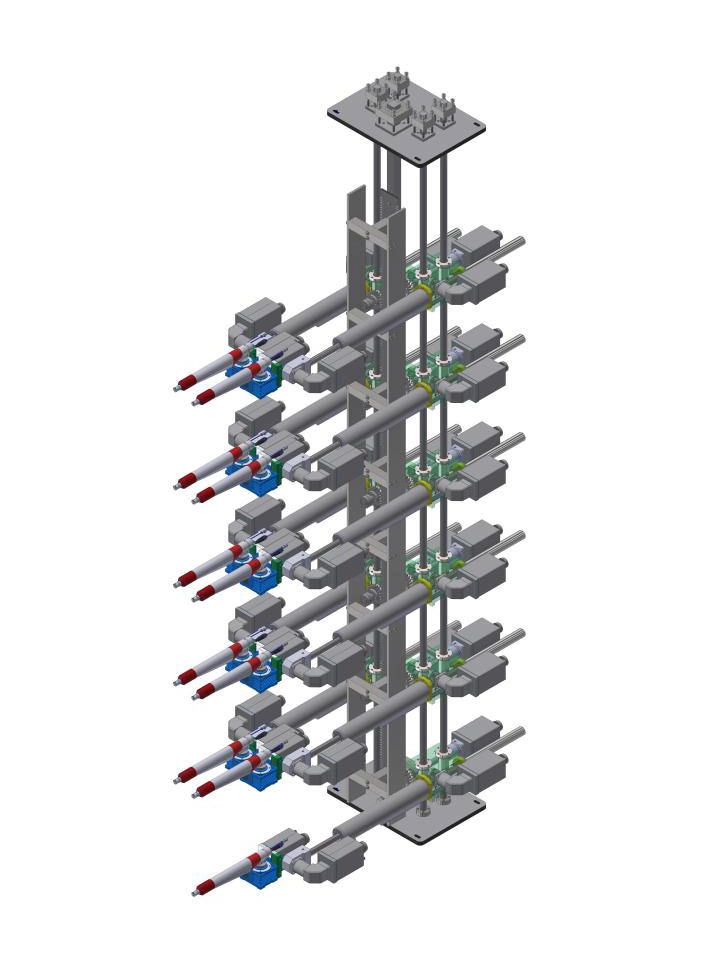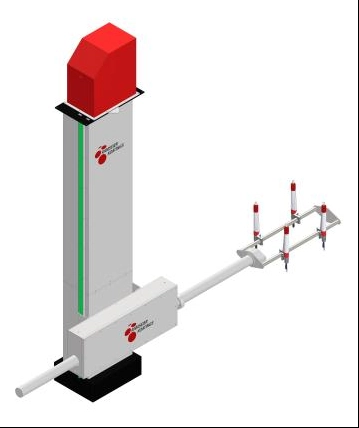Content Menu
● Understanding Spray Gun Units
● Key Features of High-Performance Spray Gun Units
>> 1. Spray Pattern Control
>>> Importance of Adjustable Spray Patterns
>>> How to Adjust Spray Patterns
>> 2. Atomization Quality and Efficiency
>>> Technologies Enhancing Atomization
>> 3. Air Pressure and Flow Regulation
>>> Integrated Regulators and Gauges
>> 4. Ergonomics and User Comfort
>> 5. Nozzle Versatility and Easy Maintenance
>>> Cleaning and Durability Features
>> 6. Material Compatibility
>> 7. Power Source and Portability
● Additional Considerations When Choosing a Spray Gun Unit
>> 1. Ease of Setup and Use
>> 2. Brand Reputation and Support
>> 3. Pricing and Budget
>> 4. Environmental Compliance
● How to Maintain Your High-Performance Spray Gun Unit
● Common Applications of High-Performance Spray Guns
● Frequently Asked Questions (FAQs)
● Conclusion
In industries such as automotive painting, woodworking, manufacturing, and even DIY home projects, having the right spray gun unit can make a significant difference in the quality of finish and efficiency of the task. Choosing a high-performance spray gun unit ensures smooth, even application, minimizes waste, and enhances overall productivity. This comprehensive guide will explore the top features you should look for when selecting a spray gun unit, helping you make an informed decision that suits your needs.

Understanding Spray Gun Units
Before diving into the features, it's important to understand what a spray gun unit entails. A spray gun is a device used to apply liquids such as paint, varnish, or stains by atomizing the fluid into a fine spray. These units can be powered by air (pneumatic), electricity (HVLP electric guns), or use other mechanisms to distribute the material evenly.
Different spray gun types include conventional, HVLP (High Volume Low Pressure), LVLP (Low Volume Low Pressure), and airless spray guns, each suited to different applications. A high-performance spray gun unit combines multiple factors that contribute to precision, efficiency, and ease of use.
Key Features of High-Performance Spray Gun Units
1. Spray Pattern Control
Importance of Adjustable Spray Patterns
One of the defining features of a high-performance spray gun is the ability to control the spray pattern. The pattern refers to the shape and size of the paint application area on the surface.
- Fan Pattern: Most spray guns allow adjustment of the fan shape and width, ranging from a narrow stream to a wide fan. This enables you to cover small or large areas with precision.
- Symmetry: The spray pattern should be even and symmetrical to avoid uneven coating and runs.
How to Adjust Spray Patterns
Look for units with easily adjustable tips or nozzles and controls that fine-tune the pattern without needing extensive disassembly. This flexibility improves accuracy for different tasks.
2. Atomization Quality and Efficiency
Atomization is the process of breaking liquid paint into tiny droplets, which influences the smoothness and consistency of the finish.
- Fine Atomization: A high-performance spray gun produces fine droplets that ensure smooth coverage without excessive overspray.
- Material Efficiency: Efficient atomization reduces paint waste and environmental contamination, helping to cut costs and comply with regulations.
Technologies Enhancing Atomization
Some advanced spray guns feature technologies like HVLP that lower pressure but increase volume to optimize atomization and transfer efficiency. These help achieve professional finishes while being more eco-friendly.
3. Air Pressure and Flow Regulation
Effective control over air pressure and flow rate is critical in achieving consistent spray results.
- Pressure Adjustment: Being able to adjust air pressure allows you to tailor the spray for different materials, ranging from thin stains to thick paints.
- Consistent Air Delivery: Reliable, stable air pressure prevents sputtering or fish eyes in the finish.
Integrated Regulators and Gauges
Top-tier spray gun units often come with built-in regulators and pressure gauges, providing real-time monitoring and control for precision spraying.
4. Ergonomics and User Comfort
Since many painting jobs require extended use of the spray gun, ergonomics significantly impact user fatigue and control.
- Lightweight Design: A balanced, lightweight gun reduces arm strain during long projects.
- Comfortable Grip: Soft handles, anti-slip coatings, and well-placed controls improve handling and accuracy.
- Trigger Sensitivity: Smooth, adjustable triggers allow for better flow control without finger fatigue.
5. Nozzle Versatility and Easy Maintenance
A versatile spray gun should accommodate multiple nozzle sizes to work with different materials and viscosities.
- Interchangeable Nozzles: Multiple tip sizes make it possible to switch from fine finishes to heavy coatings.
- Quick-Release Systems: Easy-to-clean, quick-release nozzles reduce downtime and maintenance effort.
Cleaning and Durability Features
High-performance units are often constructed from corrosion-resistant materials like stainless steel or aluminum, and they incorporate designs that simplify the cleaning process, such as detachable fluid passages.
6. Material Compatibility
Different coatings and materials require specific chemical compatibility to avoid damage to the spray gun or compromised finishes.
- Chemical-Resistant Components: Look for guns with seals, hoses, and body materials that resist paints, solvents, lacquers, and other chemicals.
- Versatile Fluid Delivery: The gun should work with a wide range of fluid types, including water-based, solvent-based, and high-solids paints.
7. Power Source and Portability
Spray guns are powered by different sources depending on application and mobility requirements.
- Pneumatic Systems: Air-powered guns usually provide strong atomization but require a compressor and air hose setup.
- Electric HVLP Units: These operate without air compressors and are often smaller and easier to move.
- Cordless Models: For ultimate portability, battery-powered spray guns offer flexibility but may have limitations in power or runtime.
Additional Considerations When Choosing a Spray Gun Unit
1. Ease of Setup and Use
Look for units that are intuitive to assemble, adjust, and operate. User-friendly designs reduce the learning curve and errors, ensuring consistent finishes.
2. Brand Reputation and Support
Leading manufacturers often provide better customer service, access to replacement parts, and reliable warranties.
3. Pricing and Budget
While high-performance spray guns can have a higher upfront cost, consider the long-term savings from improved efficiency, durability, and finish quality.
4. Environmental Compliance
In regions with strict environmental regulations, selecting spray gun units that optimize transfer efficiency and reduce volatile organic compound (VOC) emissions is important.
How to Maintain Your High-Performance Spray Gun Unit
Proper maintenance prolongs the life of your spray gun and keeps performance at its peak.
- Always clean the gun immediately after use to prevent paint buildup.
- Inspect seals and nozzles regularly for wear and tear.
- Lubricate moving parts as recommended by the manufacturer.
- Store the gun in a clean, dry place to avoid corrosion.
Common Applications of High-Performance Spray Guns
- Automotive Painting: Precision and smooth finishes are critical for automotive bodywork.
- Furniture and Woodworking: Applying stains and varnishes uniformly improves aesthetics and protection.
- Industrial Coatings: Spray guns are used to apply protective coatings on machinery and infrastructure.
- Home Improvement: DIY projects like painting cabinets or fences benefit from consistent spray patterns and easy handling.

Frequently Asked Questions (FAQs)
Q1: What is the difference between HVLP and conventional spray guns?
A1: HVLP spray guns use high volume but low pressure, reducing overspray and improving transfer efficiency, making them more environmentally friendly and ideal for detailed work. Conventional guns use higher pressure, which can cover larger areas faster but often with more overspray.
Q2: How do I choose the right nozzle size for my spray gun?
A2: The size depends on the type and thickness of the material you are spraying. Thinner materials require smaller nozzles for fine atomization, while thicker coatings need larger nozzles to prevent clogging.
Q3: Can I use the same spray gun for different types of paint?
A3: Yes, but your gun must be compatible with various paint types. Having interchangeable nozzles and chemical-resistant seals helps accommodate different materials.
Q4: How often should I clean my spray gun?
A4: Clean the gun thoroughly after each use to prevent buildup and clogging, which can degrade spray quality and damage internal components.
Q5: Is a cordless spray gun as effective as pneumatic models?
A5: Cordless models offer portability and ease of use but may lack the consistent pressure and power of pneumatic guns, making them more suitable for smaller projects or touch-ups.
Conclusion
Investing in a high-performance spray gun unit is essential for professionals and hobbyists looking to achieve superior finishes with efficiency and ease. The top features—such as adjustable spray patterns, fine atomization, air pressure control, ergonomic design, versatile nozzles, material compatibility, and portability—work together to enhance your painting experience and results. By carefully considering these features alongside your specific application needs, you can select a spray gun unit that promises durability, precision, and satisfaction.
Hot Tags: China, Global, OEM, private label, manufacturers, factory, suppliers, manufacturing company










































 .
. 